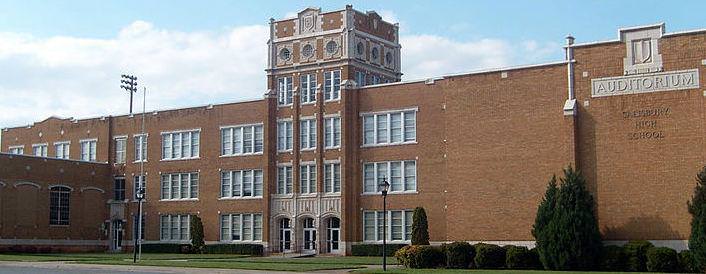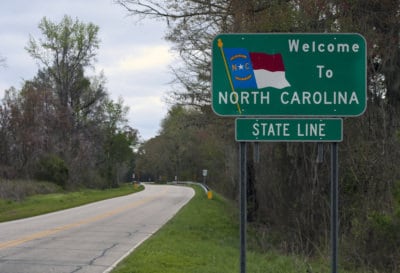
Last week, Rowan-Salisbury Schools held the first two of six community meetings to discuss the possibility of consolidating nearly a dozen of the 35 schools in the district. The majority of schools in the county were built over 50 years ago.
Shawn Henderson, a father of three students in the district who attended the first meeting, said he felt as a parent it’s his duty to make sure he is informed regarding decisions that may affect his children.
“I’m here to get more information,” said Henderson. “I understand that there are certain caveats that need to be addressed. A lot of issues need to be handled. More resources are going to have to come from somewhere to make this work.”
The plan, if it goes through, will lead to the closing of six elementary, three middle, and two high schools. The plan would help the district offset $200 million in capital needs it hasn’t been able to address.
The first two meetings, held at Salisbury High School and East Rowan High School last week, brought in community members who received a handout giving an overview of the proposal upon entry. Information on the handout was separated into three tiers, which highlighted the recommendations that were made to the board. After a welcome from the system representative, attendees were shown a video that went into detail regarding the project.
Once the video presentation was completed, all in attendance split up into classrooms for a community dialogue.
Leading the discussion in one classroom was Josh Wagner, chair of the school board. To facilitate the dialogue in each room, attendees were asked questions that corresponded with the proposed plan. The first question presented at Salisbury High School was: Which of the capital needs area closings affects you the most? Answers varied as there were system employees, parents, and concerned residents in attendance. Responses to the question included concerns about:
- Younger students being housed in a school with older students at the proposed K-8 school
- Whether it is reasonable to spend additional funds to acquire property when the system still owns the property the demolished schools occupy
- The implications for the community of busing students to other schools if North Rowan High School is closed
- Which schools students will attend while the new schools are being built
- Whether employees in classified positions will lose their jobs
Another question that was asked was: When talking about the consolidation, what do you consider the most important factor? Busing was a major concern among those who attended.
Henderson also expressed concern over whether or not students would blend well with students from other areas of the county. Ultimately, he said he wants what’s best for all students in the district.
“We want them to do more than just walk across the stage at graduation,” Henderson noted. “We want them to be successful.”
At the East Rowan High School meeting, one parent spoke about the poor conditions at her son’s school.
“My son went to the ER for asthma four times in the first grade,” she said. “I worked at that school. When I took a poster from the wall, the back was covered in mold. He was redistricted to a new school and never had to go to the ER again.”
According to information released by the system, the annual cost to maintain the current roster of 35 schools is approximately $5.3 million. The system receives $2.4 million in funding yearly, leaving it with a deficit of more than $2.9 million per year. Regular components of the school that require maintenance include chillers, carpets, boilers, elevators, fire alarms, HVAC, water heaters, heat pumps, roofs, paving, painting, etc. There is an annual cost of approximately $153,123 per school for maintenance.
Tier One of the consolidation would take place over a one to five-year period and is broken down into smaller steps:
- Knox & Overton Plan: Close and demolish Knox Middle School and Overton Elementary School; purchase new property; construct a new K-8 school
- North High Plan: Close and demolish North Rowan High School; reassign students
- Vocational High Plan: Create Vocational High School at Koontz Elementary; reassign students
- Henderson Plan: Close and demolish Henderson High School; relocate alternative learning center; develop mobile pod classrooms
- East Elementary Plan: Close and demolish Faith, Rockwell, and Granite Quarry Elementary Schools; classroom addition at Shive Elementary; construct new east elementary school
The estimated cost for Tier One is $117.2 million dollars.
Tier Two would take place over six to 10 years and would consist of:
- South Elementary Plan: Close and demolish Enochville, China Grove, and Landis Elementary Schools; classroom addition at Millbridge and Knollwood Elementary Schools; construct new south elementary school
- South Middle Plan: Close and demolish China Grove and Corriher-Lipe Middle School; purchase new property; construct new south middle school
Estimated cost to complete Tier Two is $124.5 million dollars.
The Tier Three plan, taking place over 11-20 years, is:
- Renovate or replace Morgan, Mt. Ulla, Hurley, Bostian and Knollwood Elementary Schools and Salisbury High School.
The cost for this tier has not been estimated.
While gathering input at Salisbury High School, Wagner noted that due to the meetings, the community “will probably see something different after compiling feedback” the next time the board meets. The chair admitted to not having all the answers but does believe that whatever plan is implemented will require some redistricting.
The school system is documenting all feedback and will send all the data to those who attended, once the meetings are concluded. The school board anticipates voting on the measure later in 2019.
More meetings are scheduled. All meetings start promptly at 5:30 and end at 6:30.
- Southeast & South Community: South High December 13
- West Community: West Rowan High School December 18
- North Rowan Community: North Rowan High School December 19.
Anyone unable to attend can leave input here.





